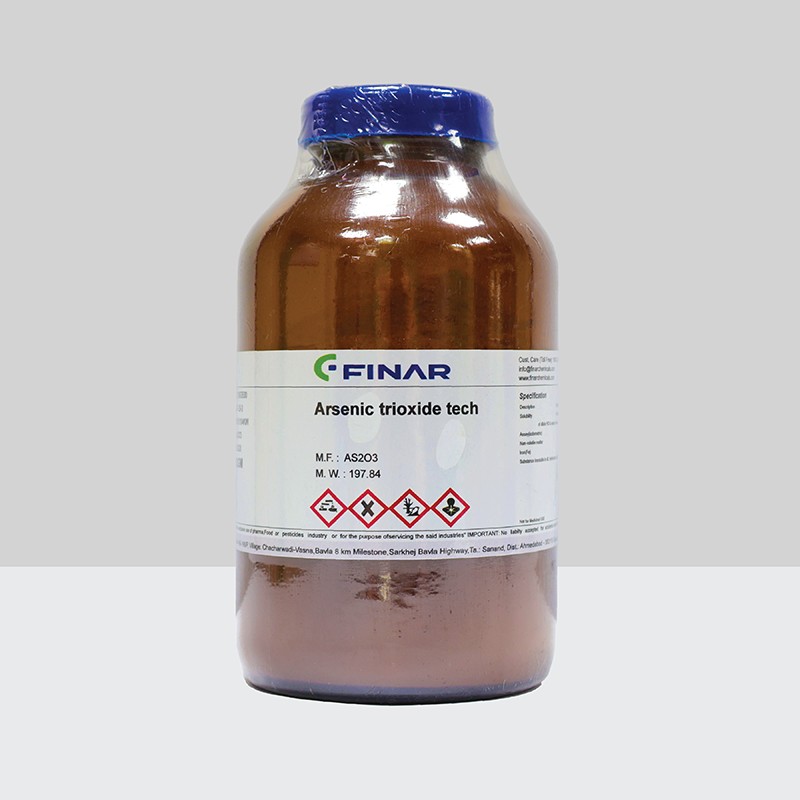Arsenic trioxide is a highly toxic inorganic compound with limited medical and industrial applications. Due to its extreme toxicity, its handling and storage require strict safety protocols.
Product Description
- Chemical Formula: As2O3
- Appearance: White to yellowish powder or crystals
- Molecular Weight: 197.84 g/mol
- Density: 3.70 g/cm³
- Melting Point: 193 °C (379 °F)
- Boiling Point: Sublimes at 190-200 °C (372-392 °F)
- Solubility: Slightly soluble in water
- Solubility in Ethanol: Soluble
- CAS Number: 1327-53-3
- Hazard Class: Toxic
Usage Recommendations
- Analytical Chemistry: Used as a standard or reference material in various analytical techniques, such as atomic absorption spectroscopy (AAS) and inductively coupled plasma mass spectrometry (ICP-MS).
- Research: Employed in studies investigating the toxicity of arsenic, its bioaccumulation, and its effects on biological systems.
- Material Science: Used in the synthesis of certain materials or as a catalyst in chemical reactions.
- Medical Applications: In limited cases, arsenic trioxide is used as a last resort treatment for acute promyelocytic leukemia (APL), a rare form of blood cancer. However, its use is highly regulated due to its toxicity.
- Industrial Applications: Historically, arsenic trioxide was used in the production of pigments, dyes, and wood preservatives, but its use in these applications has declined due to its toxicity.
- Laboratory Use: Used in research laboratories under strict safety protocols for various chemical and biological experiments.
Caution
- Extreme Toxicity: Arsenic trioxide is highly toxic and can cause severe health problems, including respiratory distress, gastrointestinal issues, and neurological damage.
- Inhalation, Ingestion, and Skin Contact: Avoid inhalation, ingestion, and skin contact with arsenic trioxide. Wear appropriate personal protective equipment, including gloves, respiratory protection, and eye protection.
- Storage: Store arsenic trioxide in a secure, well-ventilated area away from heat, sparks, and oxidizing agents.
- Disposal: Dispose of arsenic trioxide according to local regulations and guidelines for hazardous waste.
- Emergency Response: In case of accidental exposure, seek immediate medical attention. Provide the healthcare provider with information about the exposure, including the substance involved and the amount.

Login To Comment